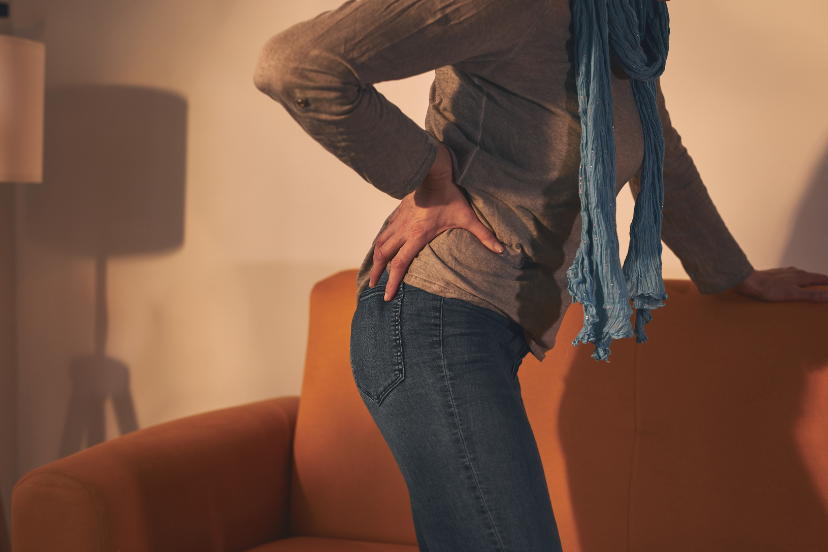Hip Osteoporosis Symptoms : Unveiling the Signs
Understanding the Telltale Signs
In the realm of bone health, few conditions are as stealthy and insidious as hip osteoporosis symptoms. This silent assailant gradually erodes bone density, particularly in the hip region, posing significant risks for fractures and debilitating consequences. Understanding the nuances of hip osteoporosis symptoms is not just about recognizing discomfort—it’s about arming oneself with knowledge, vigilance, and proactive measures.
As we navigate the intricacies of bone health, the quest to uncover the signs of hip osteoporosis becomes paramount. From the subtle whispers of discomfort to the more overt signals of bone deformities and fracture susceptibility, each symptom serves as a crucial piece of the puzzle in our journey towards stronger, healthier hips.
Join us as we embark on a comprehensive exploration of hip osteoporosis symptoms—a journey that transcends mere recognition to empower individuals with the tools they need to safeguard their bone health and vitality. Let’s delve deep into the realm of hip osteoporosis, shedding light on its manifestations, FAQs, and essential insights for a life of strength and resilience. 🦴💡
Common Signs and Symptoms
- Gradual Onset of Hip Pain: Do you experience persistent discomfort in your hip area, especially during movement or weight-bearing activities?
- Limited Range of Motion: Have you noticed a decrease in your hip’s flexibility, making routine tasks like bending or squatting challenging?
- Increased Fracture Susceptibility: Are minor falls resulting in fractures, particularly around the hip region, becoming more frequent?
- Height Loss Over Time: Have you observed a gradual reduction in your height, which could be indicative of spinal compression fractures associated with osteoporosis?
- Difficulty Walking: Do you find it increasingly challenging to maintain balance and stability while walking, potentially due to weakened hip bones?
- Bone Deformities: Have you noticed any changes in your hip’s shape or alignment, such as a protruding bone or curvature?
- Fracture-related Symptoms: Are you experiencing sharp or stabbing pain in your hip following a fall or injury, accompanied by swelling or bruising?
Less Common but Important Symptoms
- Numbness or Tingling: Have you experienced sensations of numbness or tingling in your hip or surrounding areas, possibly indicating nerve compression due to bone deterioration?
- Chronic Fatigue: Do you feel persistently fatigued, which could be attributed to the body’s increased metabolic demands in response to bone remodeling processes?
- Difficulty Standing from a Seated Position: Are you finding it challenging to rise from a seated position without assistance, indicating reduced hip strength and stability?
- Changes in Posture: Have you noticed alterations in your posture, such as a forward-leaning stance or curvature of the spine, commonly seen in individuals with advanced osteoporosis?
- Joint Stiffness: Do you experience stiffness or discomfort in the hip joint, particularly in the mornings or after prolonged periods of inactivity?
- Referred Pain: Are you experiencing pain that radiates from the hip to other areas of the body, such as the groin, buttocks, or lower back?
Seeking Medical Attention
If you resonate with any of these symptoms or suspect hip osteoporosis, it’s crucial to consult a healthcare professional promptly. Early diagnosis and intervention can significantly impact the progression of the condition and enhance your quality of life.
Frequently Asked Questions (FAQs)
1. What causes hip osteoporosis symptoms?
Hip osteoporosis primarily results from decreased bone density, often due to aging, hormonal changes, inadequate nutrition, sedentary lifestyle, or certain medical conditions and medications.
2. Can hip osteoporosis symptoms be reversed?
While osteoporosis itself may not be reversible, early detection and appropriate management strategies, including lifestyle modifications, medications, and targeted exercises, can help prevent further bone loss and reduce fracture risk.
3. Are hip osteoporosis symptoms more common in women?
Yes, women are at a higher risk of developing osteoporosis, particularly after menopause due to declining estrogen levels, which play a crucial role in maintaining bone density.
4. How can I prevent hip osteoporosis symptoms?
Adopting a bone-healthy lifestyle, including regular weight-bearing exercises, adequate calcium and vitamin D intake, avoiding smoking and excessive alcohol consumption, and getting regular bone density screenings, can help prevent or delay the onset of hip osteoporosis symptoms.
5. Are there any dietary recommendations for managing hip osteoporosis symptoms?
A balanced diet rich in calcium-rich foods like dairy products, leafy greens, fortified foods, and supplements if necessary, along with sufficient vitamin D from sunlight exposure or supplements, supports bone health and helps alleviate hip osteoporosis symptoms.
6. What are the long-term consequences of untreated hip osteoporosis symptoms?
Untreated hip osteoporosis can lead to severe complications, including recurrent fractures, chronic pain, loss of mobility, and increased risk of disability, significantly impacting an individual’s overall health and independence.
Conclusion
In conclusion, recognizing and addressing hip osteoporosis symptoms early on is pivotal for preserving bone health and preventing debilitating fractures. By staying vigilant, seeking timely medical guidance, and adopting a holistic approach to bone care, individuals can mitigate the impact of this condition and enjoy a life of strength and vitality. Don’t ignore the whispers of your bones—heed the signs, and embark on a journey towards stronger, healthier hips.




